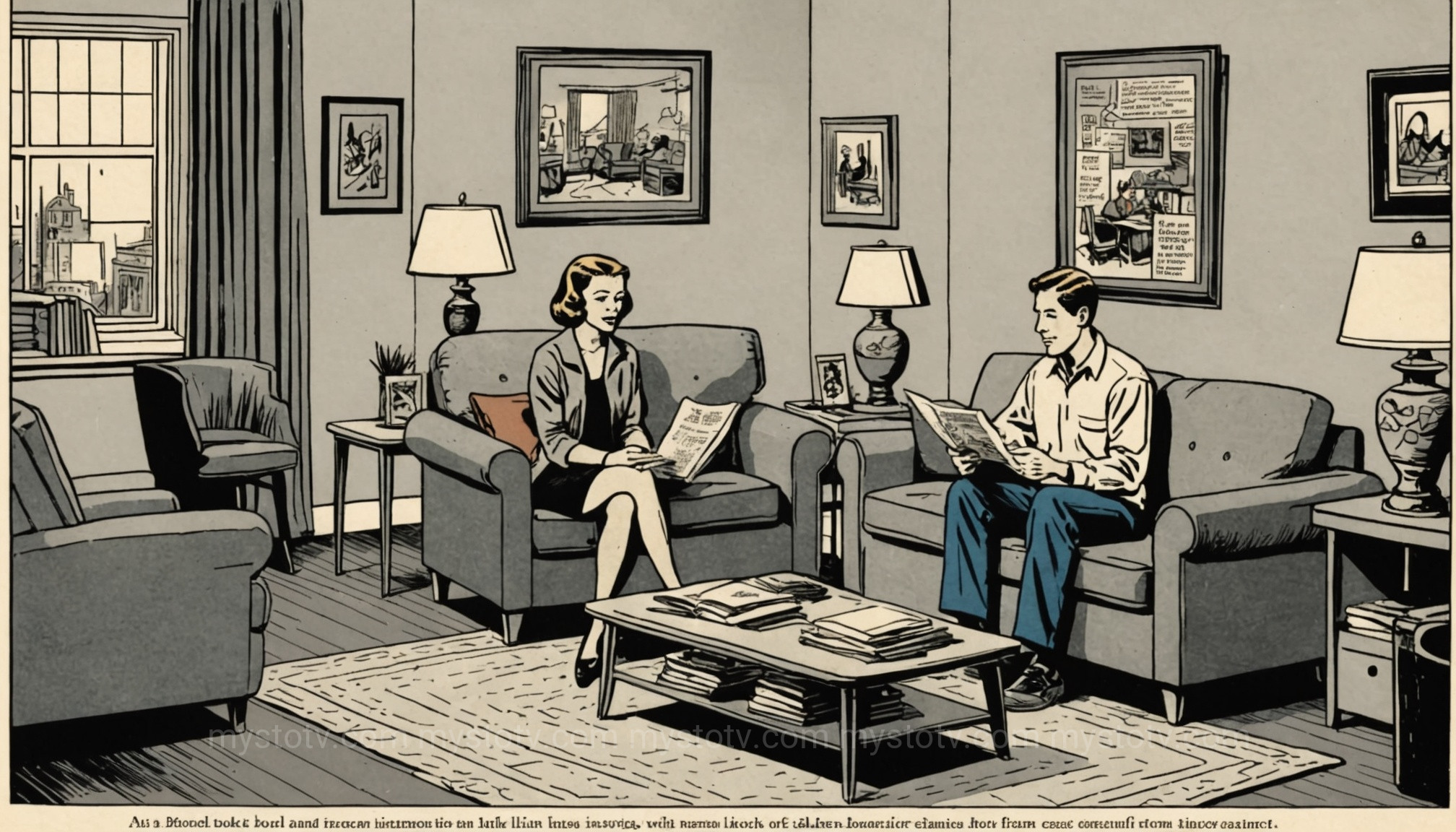Contents
- 1 Understanding Paranoia First: The Critical Foundation for How to Help Someone with Paranoia
- 2 The Do's: Essential Strategies for How to Help Someone with Paranoia
- 3 The Don'ts: Common Mistakes in How to Help Someone with Paranoia (And What to Do Instead)
- 4 Encouraging Professional Help: A Delicate Approach to How to Help Someone with Paranoia
- 5 Caring for Yourself: The Overlooked Step in How to Help Someone with Paranoia
- 6 FAQ: Common Questions on How to Help Someone with Paranoia
- 7 Conclusion: Your Role as a Compassionate Anchor
- 8 References
Understanding Paranoia First: The Critical Foundation for How to Help Someone with Paranoia

Before you can effectively intervene, you must understand what paranoia truly is. It's not just simple worrying or a quirky suspicion. Paranoia is a thinking pattern dominated by intense, irrational, and persistent feelings of persecution or threat. For the person experiencing it, these fears are not abstract—they are their reality. The National Alliance on Mental Illness (NAMI) clarifies that these thoughts can range from mild suspicion to severe, fixed beliefs known as delusions.
From a therapeutic standpoint, it's crucial to recognize that the emotion behind the paranoid thought is 100% real, even if the content of the thought is not based in fact. The fear, anxiety, and distress are genuine. When someone believes they are being followed, the terror they feel is as real as if they were actually being followed. Dismissing their belief is equivalent to dismissing their terror. Therefore, the first step in learning how to help someone with paranoia is to shift your focus from disproving the "story" to acknowledging the "feeling." This separation is the cornerstone of effective support.
Analysis: This foundational understanding prevents the most common and damaging mistake: direct confrontation. By seeing the emotion as the primary issue to address, you move from an adversarial role (fact-checker) to a supportive one (ally). This pivot is essential because trust is the only currency that has value in this situation. Without trust, any attempt to help will be perceived as part of the threat, further entrenching the paranoid beliefs.
The Do's: Essential Strategies for How to Help Someone with Paranoia
Once you've shifted your mindset, you can employ specific strategies that build trust and de-escalate distress. These "Do's" are about creating a safe emotional space where the person feels heard and supported, which can make them more receptive to help in the long run.
Validate Their Feelings, Not Their Delusions
This is the most important skill to learn. You do not have to agree that the CIA has bugged their coffee maker, but you can and should agree that feeling monitored must be terrifying. Validation sounds like: "That sounds incredibly stressful," or "I can see how upsetting that would be," or "It must feel awful to think you can't trust anyone."
Analysis: This technique, central to therapeutic approaches like Dialectical Behavior Therapy (DBT), works because it communicates empathy without condoning the delusion. You are validating the emotional experience. This act of empathy lowers their defenses. When a person feels understood emotionally, their anxiety can decrease, which sometimes lessens the intensity of the paranoid thoughts. It's a critical first step in how to help someone with paranoia effectively.
Focus on the Emotion and Its Impact
Gently steer the conversation away from the "facts" of the paranoid belief and toward the emotional toll it's taking. Ask questions like: "How are you coping with all this stress?" or "This must be exhausting for you. What has it been like?"
Analysis: This approach keeps you on safe, common ground. You are talking about real, tangible things: stress, fear, and exhaustion. This does two things. First, it helps the person connect with their internal state, which can be a step toward recognizing the problem is their distress, not necessarily an external conspiracy. Second, it opens the door to practical solutions. You can't solve a conspiracy, but you can help someone manage stress and exhaustion, which can be an entry point for suggesting professional help.
Maintain a Calm and Consistent Presence

Your non-verbal communication is just as important as your words. Speak calmly and clearly. Avoid sudden movements. Be predictable and reliable. If you say you will call at 3 PM, call at 3 PM. Paranoia thrives on uncertainty and perceived deception. Your consistency becomes a small anchor of safety in their chaotic world.
Analysis: Consistency and calmness directly counteract the core themes of paranoia—unpredictability and threat. When your behavior is reliable, you become a "safe" data point in their environment. This can, over time, create a pocket of security, proving that not everyone is deceptive or dangerous. It is a long-term strategy for building the foundational trust needed for any further steps in how to help someone with paranoia.
The Don'ts: Common Mistakes in How to Help Someone with Paranoia (And What to Do Instead)
Knowing what not to do is as crucial as knowing what to do. The following actions, often born from a desire to help, can severely damage trust and worsen the situation.
Avoid Arguing or Debating Reality
This is the most common pitfall. Presenting evidence, logic, or "proof" that their belief is wrong is almost always counterproductive. A paranoid belief is not based on logic, so it cannot be dismantled by it. To the person experiencing it, you are the one who is illogical or, worse, part of the conspiracy.
Instead: Use the validation techniques mentioned earlier. If pushed to agree or disagree, use neutral, non-committal language. "I understand that this is what you are experiencing," or "I can see that you firmly believe this."
Analysis: Arguing invalidates their deeply held reality, forcing them to defend their beliefs more vigorously. This is known as the "backfire effect," where challenging core beliefs can cause them to become even stronger. Avoiding arguments protects the relationship, which is your most valuable tool in being able to help someone with paranoia.
Don't Play Along or Feed the Delusion
While you shouldn't argue, you also shouldn't lie. Participating in the delusion—like helping them search for bugs or confirming their suspicions—is a short-term fix that creates a long-term disaster. It reinforces the paranoid belief, making it harder to treat later on. It also shatters your credibility if the truth ever comes out.
Instead: Remain a neutral, supportive presence grounded in shared reality. You can say, "I know you are worried about bugs in the room, but I don't see any. However, I can stay with you for a while if you're feeling scared."
Analysis: This fine line between validation and collusion is key. By refusing to participate, you maintain your connection to reality. This allows you to be a potential bridge back to it for them. If you join their delusion, you are both lost. Your role is to be an anchor, not a fellow passenger on the boat.
Resist the Urge to Be Dismissive or Patronizing
Comments like "You're just being silly," "That's crazy," or "You're overreacting" are incredibly damaging. They are invalidating, condescending, and communicate that you see them as broken or foolish. This will likely lead to them shutting you out completely.
Instead: Take their emotional distress seriously, always. Remember, the fear is real. Treat their emotional state with the gravity it deserves, even if you don't agree with the cause.
Analysis: Dismissive language is a fast track to destroying trust. From a clinical perspective, it triggers shame and alienation, which are often contributing factors to severe mental health episodes. The goal of how to help someone with paranoia is to foster connection, and patronizing language achieves the exact opposite.
Encouraging Professional Help: A Delicate Approach to How to Help Someone with Paranoia
The ultimate goal is often to connect the person with professional help, like a therapist or psychiatrist. However, suggesting this can be tricky, as it might be interpreted as you thinking they are "crazy" or part of a system designed to control them.
Focus on Symptoms, Not a Diagnosis
Avoid using words like "paranoia," "delusions," or "schizophrenia." Instead, focus on the manageable symptoms you've discussed. Frame it as a way to get support for their distress.
Example: "You've mentioned how stressed and exhausted you are from all this. It's a lot for one person to carry. I know some people find it helpful to talk to a professional, like a therapist, just to have a confidential space to manage that stress. It's not about whether the threats are real or not; it's about helping you feel less afraid and overwhelmed."
Analysis: This approach is non-threatening. You are offering a tool to manage a problem they have already acknowledged (stress, fear, anxiety). It gives them agency. They are not a "patient" being sent for "fixing," but a person seeking tools to cope with a difficult emotional state. This is a much more effective strategy for how to help someone with paranoia get the care they need. For more tips, using the right communication techniques is crucial.
Offer Practical Support
If they show even a sliver of interest, make it as easy as possible. Offer to help find therapists who specialize in anxiety or stress management. Offer to drive them to an appointment or sit in the waiting room. Removing logistical barriers can make a huge difference.
Analysis: Paranoia can be paralyzing. The executive functions required to research doctors, make calls, and arrange transport can be overwhelming. By offering practical help, you are demonstrating your support in a tangible way, reinforcing your role as a trusted ally.
Caring for Yourself: The Overlooked Step in How to Help Someone with Paranoia

Supporting someone with paranoia is emotionally and mentally draining. It's a marathon, not a sprint. If you burn out, you can't help anyone. Your own well-being is not selfish; it's a necessary component of providing sustainable support.
Set Clear Boundaries
You cannot be on-call 24/7. It's okay to say, "I can talk for 20 minutes right now," or "I can't discuss this topic again tonight, but I am here for you and we can talk tomorrow." Boundaries protect your mental health and prevent resentment from building. They also provide a structure of predictability that can be subtly reassuring to the person you're helping.
Analysis: Boundaries prevent you from becoming enmeshed in the paranoia. Without them, you risk emotional exhaustion and burnout. A burned-out helper is an ineffective helper. Setting limits is a vital part of a long-term strategy for how to help someone with paranoia.
Seek Your Own Support
Talk to a trusted friend, family member, or your own therapist. Organizations like NAMI offer support groups for family members of individuals with mental illness. You need a space to process your own feelings of frustration, sadness, and fear without judgment.
Analysis: This is called vicarious trauma, where you begin to experience emotional residue from someone else's distress. Having your own outlet is essential for processing these feelings and maintaining your own mental health and perspective.
FAQ: Common Questions on How to Help Someone with Paranoia
What if their paranoia is directed at me?
This is incredibly difficult. If you become the subject of their paranoid thoughts, the same rules apply, but with stricter boundaries. Do not argue. Validate the emotion ("I'm sorry you feel I've betrayed you; that must be a terrible feeling"), but firmly and calmly state your reality ("but that is not my experience or intention"). It may be necessary to take a step back and reduce contact for a period to protect yourself. Encourage them to speak with another trusted person or a professional, framing it as a way to get a "neutral third-party perspective."
When does paranoia become a crisis requiring immediate help?
A situation becomes a crisis if the person is a danger to themselves or others. This includes: making direct threats, expressing suicidal ideation, stockpiling weapons due to their beliefs, or being unable to care for their basic needs (food, water, shelter) because of their paranoia. In these cases, you should contact emergency services (like 911 in the U.S.) or a psychiatric crisis hotline immediately. Your priority must shift from long-term support to immediate safety.
Can I do anything if they refuse to see a therapist?
Yes. You cannot force someone into therapy, but you can continue to be a stable, supportive, non-judgmental presence in their life. Continue to practice validation, focus on their emotional distress, and gently model healthy coping mechanisms. Sometimes, your consistent support is the very thing that keeps them tethered to reality, however tenuously. Continue to care for yourself and be patient. The path to accepting help can be very long.
Conclusion: Your Role as a Compassionate Anchor
Learning how to help someone with paranoia is less about having the right answers and more about having the right approach. It is a profound exercise in empathy, patience, and emotional regulation. You cannot argue away a paranoid belief, but you can create an environment of trust and safety where the person feels less alone in their fear. By validating their emotions without validating their delusions, maintaining firm but compassionate boundaries, and encouraging help for the distress rather than the "craziness," you become a stable anchor in their storm. This doesn't guarantee a quick recovery, but it offers the best possible chance for connection and, ultimately, for healing.
References
- National Alliance on Mental Illness (NAMI). (n.d.). Paranoia and Delusional Disorders.
- Mind. (2020). Paranoia.
- Freeman, D., & Freeman, J. (2012). Paranoia: The 21st-Century Fear. Oxford University Press.
- Linehan, M. M. (2015). DBT Skills Training Manual, Second Edition. The Guilford Press.